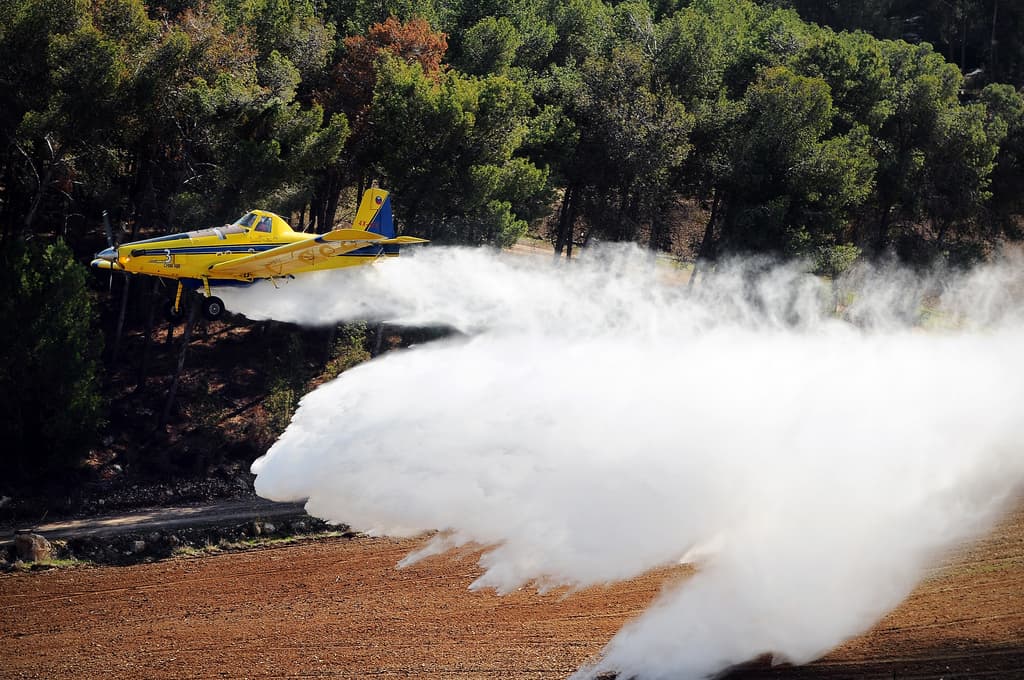The importance of aircraft maintenance and inspections cannot be overstated, says Air Tractor President Jim Hirsch. “Practically all machinery requires maintenance to ensure it operates properly,” observes Hirsch. And while they have an excellent reputation of reliability, good maintenance practices are essential for Air Tractor airplanes, too,” he adds. Data-driven maintenance, such as tracking flight hours, helps reduce downtime due to unforeseen failures, reduces the risk of safety incidents, increases predictability, and extends the useful lifespan of assets.

For aerial applicators, their ag aircraft is likely their most important business asset. Maintaining accurate records of flight hours and performing the aircraft’s time-critical maintenance inspections is the key to achieving the highest return on investment. “The operator who inspects his airplane according to its service schedule is spreading his maintenance costs throughout the year. But the operator who delays until the annual inspection could have an expensive 3-week visit to the shop.” Airplanes working in harsh dusty conditions or hauling loads of fertilizer will benefit from frequent air filter inspections and cleaning, for example, helping to assure the engine lasts as long as it should, he adds.
The first Air Tractor AT-301 was delivered to Latin America in 1977. Since that first delivery, increasing numbers of new and used Air Tractor airplanes have entered service in Central and South America. This aging agricultural aircraft fleet places particular focus on conscientious wing fatigue management, Hirsch says. “As we’ve seen from recent events, it is a critical safety element of aircraft maintenance.”
Agricultural aircraft wings are subjected to many thousands of stress loads every season. Over time, these repetitive stress loads take their toll on the wing spar. Hirsch recalls that from the company’s beginning Air Tractor, Inc. has gone to great lengths to verify the wing spar life of its airplanes. He recalls how Air Tractor founder Leland Snow was conducting full-scale wing strain testing on the company’s first production airplane, the Air Tractor AT-301.
When Leland started Air Tractor, he proved wing fatigue life by analysis using data from a Snow Aeronautical project called the Jamaica Load Spectrum Test. By 1990, he began validating those tests, starting with the collection of wing stress surveys on an AT-301. Following the AT-301, Air Tractor began collecting strain surveys and load spectrums for its most popular airplane, the AT-502. “We conducted a destructive test program and tested to failure several AT-502 wings with that load spectrum,” Hirsch says. “By the late 1990s, we had load spectrum data on the model AT-802, as well. Full-scale tests of the AT-802 wings followed, and we broke at least a pair of AT-802 wings during months of continuous stress loads that were based upon real-world wing strain data collected from a representative sample of ag pilots.” Analysis of these wing tests showed Snow’s calculated wing lifespans were conservative.
In 2000, Air Tractor began a redesign project for new, heavier spar caps which were subsequently recertified. These new wing life tests were based on much more severe pilot load spectrums. The following decade was spent redesigning, recertifying, and collecting additional load spectrums, Hirsch recalls. By the late 2000s, more wings from other Air Tractor aircraft models had been recertified and re-tested with new wing life parameters utilizing the bigger, heavier spar caps.
“By 2010, we had a well-documented understanding of wing-safe life for all our aircraft,” notes Hirsch. “In fact,” he adds, “Nobody in the aerial application industry has done more to document and test the integrity of its airframes.” Going beyond this decades-long effort, Air Tractor still remains watchful for concerns reported by Air Tractor dealers, operators, and aircraft mechanics, he says. “Wing fatigue management is an issue that changes because the mission of these airplanes expands and evolves. What’s more, the way pilots fly their airplanes also changes over time. The airplane may be used in a completely different role that may be more severe from a wing fatigue standpoint.”
More than 4,000 Air Tractor aircraft have now been produced, sold, and resold around the world. And as the fleet ages, new potential safety issues may arise. Hirsch says, “We pay close attention to our dealers, our customers, as well as official and anecdotal reports from the maintenance sector. We are watching for emerging trends that could be of concern.”
After many years and many aircraft working in countries around the world, Hirsch notes that it is difficult to track of the operational status of every Air Tractor airplane, its owner information, and its condition. “That’s why we have made it easy for Air Tractor operators to get the information they need for their airplane maintenance efforts. Owner manuals, parts manuals, pilot training documents, service letters, reference data, and service information letters are available for Air Tractor owners — at no expense — on our website, AirTractor.com.” When owners register their airplane(s), they not only have immediate access to aircraft information, they will also receive important news and service information from Air Tractor.